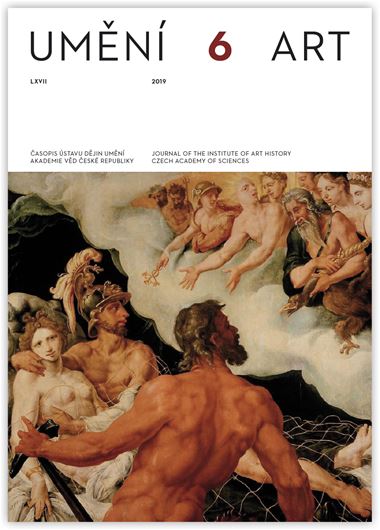Andrzej Kozieł — Arkadiusz Wojtyła
Between Prague and Wrocław. A series of portraits of Wrocław masters of the Knights of the Cross with the Red Star
The monastery of the Knights of the Cross with the Red Star in Wrocław used to be decorated with a gallery of 50 portraits of local masters which has survived to a large extent to our times. Recent research enabled us to reach all 34 preserved paintings from the series and perform their detailed analyses. The portraits were made in the same, exceptionally rich representative convention. The presentation of the foundational, intellectual and spiritual achievements of the individual masters and the most important events of their reign takes place in the backgrounds of many portraits and consistent with the content of extensive golden inscriptions which have been placed in an identical form on all the portraits. The textual source was Michael Fibiger’s manuscript Series et acta magistrorum Wratislaviensium sacri militaris ordinis crucigerorum cum rubea stella hospitalis sancti Mathiae, completed in 1706. The formal model for the series was the set of portraits of general masters of the Knights of the Cross with the Red Star, which is located in their monastery in Prague. This strict formal dependence is not surprising, as the monasteries maintained close contacts since 1667. The author of the majority of paintings was a Wrocław guild master, Johann Jacob Eybelwieser the younger (1667–1744). The founder of the portraits was master Ignaz Magnet and later the gallery was gradually completed by his successors. The series of portraits of Wrocław masters does not compare artistically to its Prague prototypes. What distinguishes Wrocław’s paintings, however, is the enormous scale of this undertaking and its deep propaganda function, which was the result of the fact that the portraits of the masters of St. Matthew’s monastery became one of the battlefields for Wrocław knights’ efforts to gain the status of a knightly order. Although we can point to the Baroque series of portraits preserved in Silesia to this day which match the Wrocław realisation in terms of scale and number of representations, none of them was provided with such an extensive system of symbolic representations, inscriptions and signs of an ideological character which complement the portrait.
Andrzej Kozieł: andrzej.koziel@uwr.edu.pl — Arkadiusz Wojtyła: arkadiusz.wojtyla@uwr.edu.pl
Full-text in the Digital Library of the Czech Academy of Sciences:
https://kramerius.lib.cas.cz/uuid/uuid:dea9449e-a5db-4ad9-bdb5-cb00121a7777
< back

